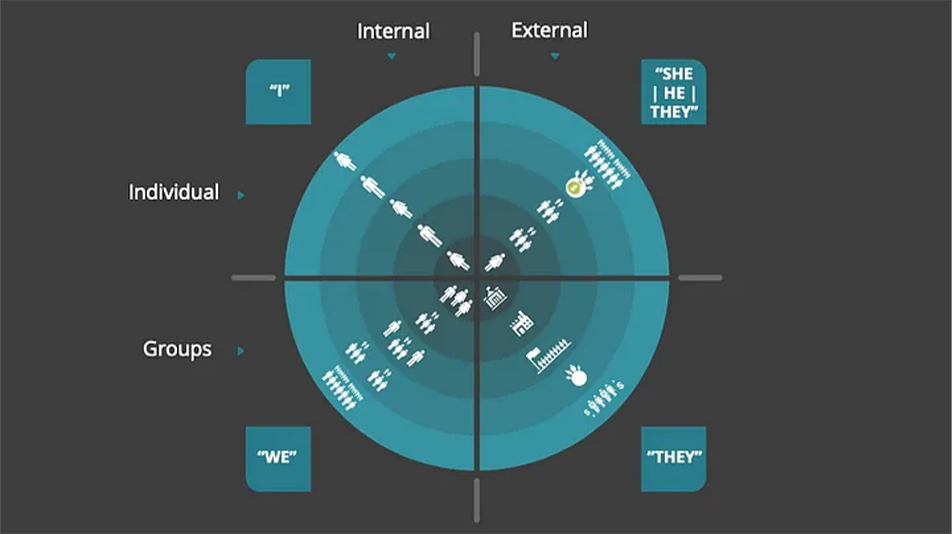Why Treating Every Client As #1 Gets Us In Trouble
Clarifying Our Vision Through Strategic Stakeholder Prioritization
In any thriving business, possessing a clear, mutually understood vision of whom your organization serves stands as the hallmark of robust strategy and compelling leadership. This understanding becomes particularly critical as organizations expand, necessitating that leadership teams grasp and effectively communicate the complexities of stakeholder hierarchies. These hierarchies guide more informed, effective decision-making that aligns with the organization’s long-term objectives.
However, misconceptions or misalignments within these hierarchies can lead to significant strategic missteps, often manifesting as widespread confusion about the primary focus of service. This blog proposes a structured approach to dissecting and prioritizing stakeholders to ensure targeted, impactful engagements.
Several years ago, I collaborated with a major corporation grappling with a technology crisis. To make a long story short, market criticisms about security vulnerabilities within their key software precipitated a hasty decision to overhaul and re-platform the application. Driven by a reactive concern for market perceptions – primarily focused on stock price impact – the corporation’s leadership mandated a rapid redevelopment cycle. This rush sidelined potential incremental improvements, aiming instead for feature parity with the legacy system.
Upon release, the new version (while technically superior) failed to meet user expectations. This led to market backlash and a tarnished brand reputation. While totally understandable, this scenario exemplifies a breakdown in understanding service hierarchies, where the focus skewed too heavily toward investor concerns at the expense of user satisfaction.
Identifying Whom We Serve
Every organization caters to a diverse array of individuals and groups, each presenting unique perspectives and demands. Drawing from Ken Wilber’s AQAL Model (below), I utilize a four-quadrant diagram to map these perspectives – internal vs. external and individual vs. collective. This framework facilitates deeper, more inclusive dialogues about stakeholder concerns, fostering a holistic strategic approach.

This ecosystem mapping aids in refining our focus, ensuring we address the needs of all relevant parties effectively. Jim Collins’ concept of the “Hedgehog Effect” underscores the importance of understanding one’s core focus – that is, what your organization can be best at. It’s about harmonizing this focus with the intricate web of stakeholder needs and expectations.
Navigating Dominance Hierarchies
The complexity of stakeholder interactions often mirrors the complexity of the organization itself. At the macro level, external group dynamics dictate how resources – e.g., capital, natural, and human – are procured and utilized. These resources flow from broad external pools (investors, global markets, local communities) inward toward the organization, fueling its operational capabilities.
Conversely, internal group dynamics focus on resource allocation and decision-making within the organization. Leadership must ensure that resources are distributed equitably across various internal groups to foster efficiency and innovation at all levels.
The Role of Individuals in Value Creation
At the individual level, the allocation of resources becomes even more granular. Here, the focus shifts to empowering employees to deliver exceptional value to the end users of the organization’s products or services. Understanding and leveraging the individual contributions within the internal hierarchy are crucial for maintaining operational effectiveness and nurturing a culture of accountability and innovation.
External Individuals: The End Recipients of Value
The ultimate test of an organization’s strategy and operational effectiveness is reflected in the satisfaction of its end users or customers. These individuals represent the final step in the value chain, directly interacting with the organization’s outputs. Ensuring that these interactions are positive is paramount for sustained business success and requires a nuanced understanding of the external individual dynamics.
Stakeholder Prioritization Is a Strategic Imperative
Mastering the art of stakeholder prioritization is not merely an administrative task, but it is also a strategic imperative that requires deep insight and thoughtful leadership. By clearly understanding and articulating the hierarchy of stakeholder needs, organizations can avoid the pitfalls of misaligned priorities and instead forge a path toward sustainable success and meaningful impact.
This approach not only guides strategic planning but also ensures that every decision made at every level of the organization aligns with its overarching goals and values. By prioritizing stakeholders wisely, we pave the way for not only meeting but exceeding the expectations of those we serve.
Recommended Reading
- A Theory of Everything, by Ken Wilber.
- Good to Great, by Jim Collins.
- Flow, by Mihaly Csikszentmihalyi.
The ITX Advantage
Regardless of whether the client is new to ITX or a long-time strategic partner, our approach to client engagement and project management is structured around a clear understanding of their needs and strategic alignment with their objectives. Here’s how we address the key areas of our operations:
Using Discovery to Understand Stakeholder Needs
For ITX, the core focus begins with a deep dive into understanding as best we can each client’s industry, business model, and specific challenges. While we will never attain our client’s level of domain knowledge, we come close.
Our product strategists and user experience (UX) researchers conduct in-depth discovery sessions during which we gather essential insights through direct interactions that include interviews and workshops with key stakeholders. This important foundational work allows the product development team to grasp the entire scope of our client’s unique business challenges and tailor our services in a way that delivers the greatest possible value while addressing end users’ requirements.
Matching Resources to Client Needs
Resource allocation at ITX is driven by the client’s strategic goals, project requirements, and internal skill set. We begin with defining the scope and objectives of the project, followed by assessing the skills and tools needed to achieve the desired outcomes.
ITX resources are then allocated and deployed in a balanced way with special attention paid to the client’s existing domain and technical competencies, availability, and the potential for impact. For lots of reasons – unnecessary expense, role confusion, opportunity cost, etc. – we avoid adding redundancy of allocation.
To achieve this, our product teams continuously monitor and adjust resource allocation to respond to project dynamics and ensure that we are consistently positioned to deliver maximum value. This dynamic allocation allows us to maintain flexibility and adaptability while staying focused on delivering results that resonate with client expectations and contribute to their success.
Prioritizing Stakeholders
When ITX product teams partner with clients, we work very hard to demonstrate care and concern for all stakeholders. But we also recognize the hierarchy and prioritize our approach based on stakeholder impact on the project; from that analysis, we strategize our engagement to ensure alignment and buy-in at every level of the hierarchy.
We employ a structured (but not rigid) approach where we map out all stakeholders involved in the project. This mapping includes, among many factors, a deep understanding their influence, expectations, and communicationpreferences. Regular updates, strategic meetings, and feedback loops are integral to this process, ensuring that all voices are heard and considered.
In all these processes, ITX is committed to maintaining a high standard of quality and integrity, ensuring that our clients receive the most effective and efficient solutions tailored to their unique needs.
References:
Czikszentmihalyi, Mihaly (2008), Flow.
Segall, Ken (2012), Insanely Simple (Note: In his story about Steve Jobs, he describes the “Reality Distortion Field” created by Jobs that people were able to step into to create products and features that didn’t exist before.).
Flaherty, Sean (2021), A Healthy Dose of Confidence.
Broadwell, Martin M. (1969), Teaching for learning (XVI).
Flaherty, Sean (2021), An Advocacy Strategy is Nutrition for Your Culture.
Stanley, Kenneth O., Ph.D.(2015), Why Greatness Cannot Be Planned.

Sean Flaherty is Executive Vice President of Innovation at ITX, where he leads a passionate group of product specialists and technologists to solve complex client challenges. Developer of The Momentum Framework, Sean is also a prolific writer and award-winning speaker discussing the subjects of empathy, innovation, and leadership.



